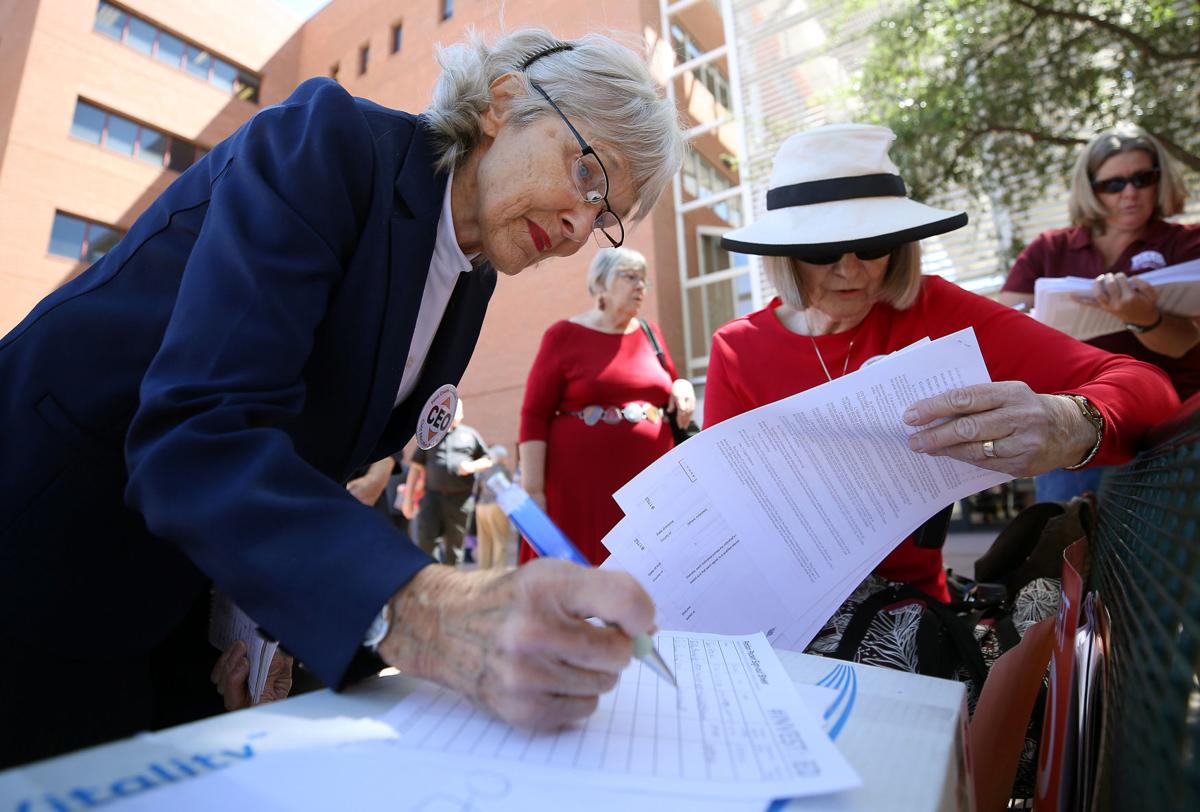Organizers of a proposed tax on the wealthy to fund education are asking the Arizona Supreme Court to overturn a trial judge’s ruling that the measure is legally unfit to go on the November ballot.
In court filings Friday, attorney Roopali Desai detailed what she said are a series of legal errors by Maricopa County Superior Court Judge Christopher Coury who concluded that the required 100-word description of the measure on petitions was inaccurate. She said Coury, in accepting arguments by the Arizona Chamber of Commerce and Industry, is misreading what Arizona law requires.
But Desai also took a swat at the judge, accusing him of crafting an order “capped off by gratuitous and insulting rhetoric aimed at the (Invest in Education) Committee that could be part of a press release written by the Chamber itself.”
She also called Coury’s interpretation of how the committee should describe its own initiative as “paternalistic.”
And she warned the justices that allowing Coury’s ruling to stand would create “an unconstitutional and untenable new standard” for what is required of groups and individuals seeking to exercise their rights to craft their own laws.
A few of the things that happen on Tucson summer days.
“It is an impossible standard to meet,” Desai wrote, saying it would effectively eliminate future initiatives. And she said it conflicts with the free-speech provisions of both the Arizona and U.S. constitutions.
Arizona law requires that those proposing their own laws include a description of no more than 100 words “of the principal provisions of the proposed measure.” And Desai pointed out to the justices that they have said in previous cases that it need not be impartial or detail every provision.
“It’s also relevant that an initiative’s sponsor has only 100 words to describe what are often complex changes to the law,” she wrote.
And Desai pointed out that it says right on the petition that the summary is prepared by the sponsors, signaling them that it may not be complete or unbiased.
Coury, in his 20-page ruling, said legal flaws in that summary made the whole measure ineligible to go to voters.
For example, he said while the description listed where the money raised would go it never spelled out the specific percentages that would go to beneficiaries, including teachers, support personnel, mentoring and retention programs for new teachers, and career training. Coury said voters would want to know that just 50% is for teachers and other personnel.
The judge also said it didn’t spell out that lawmakers would be barred from simply using the money raised from the tax — an estimated $940 million a year according to proponents — to cut other existing funds.
And he particularly objected to describing the additional 3.5% tax on incomes over $250,000 for individuals and $500,000 for couples as a “surcharge,” calling it an “undefined term” and saying it failed to inform taxpayers it would effectively be a 77.7% increase on the 4.5% tax those in that tax category currently pay on all amounts above that cutoff.
But Coury also took a slap at organizers, saying they “ignored the lessons” of a 2018 Supreme Court ruling which removed a similar measure from the ballot, arguments advanced this year by the Chamber of Commerce.
The judge took note, calling it “disappointing” that Invest in Education failed to learn from that 2018 ruling.
He compared the committee to an inattentive student who disregards a teacher’s instruction on how to complete a math problem and then does it wrong again on a future test. That, Coury said, deserves a failing grade.
“Like an honest teacher, the court cannot ‘look the other way,’ pretend that Invest in Education has done what is required, and allow IIE to pass,” he wrote.
Desai told the justices it is the chamber’s claims about the effect of the 2018 ruling — and Coury’s acceptance of them — that is wrong. And she said the issues presented now are different.
But the bigger thrust of her argument is that letting Coury’s ruling stand undermines the constitutional right of initiative.
She said there’s nothing wrong with requirements that initiative summaries cannot be fraudulent or misleading. But Desai said the trial court’s decision goes beyond that.
“Its ruling mandates that initiative proponents include words proposed by opponents (or the court) or face disqualification,” she said. “It did so because the summary did not use the court’s preferred wording and failed to include words the challengers proposed.”
That Desai said, is “paternalistic.” And she said it runs afoul over free-speech protections, essentially compelling people to say things in the description they would not otherwise say — and even contrary to the message they want to convey — to ensure they can get a proposal on the ballot.
“The right to advocate for and circulate initiative petitions is the essence of First Amendment expression,” she said. “If the summary is not fraudulent or misleading, initiative proponents have the right to decide how they want to express the merits of the proposed change.”
The justices have not said when they will consider the matter. But they are aware that the deadline to print ballots is Aug. 21.





